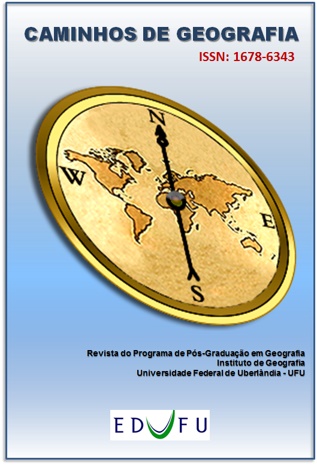SPATIAL ANALYSIS OF NATIVE VEGETATION COVERAGE IN NATURAL PROTECTED AREAS AND PRIVATE AREAS OF THE BURANHÉM RIVER WATERSHED AND THE LEGAL IMPLICATIONS
DOI:
https://doi.org/10.14393/RCG228457030Keywords:
Legislação ambiental, Geoprocessamento, Sentinel-2, MDE ALOS PALSAR, QGISAbstract
The Brazilian environmental legislation establishes restrictions of use in some areas in rural properties, to protect relevant spaces for the conservation of species and natural resources. In this respect, geoprocessing has become an essential tool in the monitoring and inspection of areas whose native vegetation must be maintained. The objective of this study was to identify the Permanent Preservation Areas (PPAs) and Legal Reserve (LR) located in the Buranhém River watershed, between the states of Minas Gerais and Bahia, and to verify if these areas meet the requirements of Brazilian law or if there are conflicts in land use. For the mapping of vegetation and APP classes, images from the Sentinel-2 satellite, the digital elevation model (DEM) from Alos-Palsar, and the free program QGIS were used. It was found that in 74.7% of the PPAs and 41.8% of the Legal Reserve areas do not have predominantly native vegetation, what characterizes a legal conflict of use of these areas. Therefore, for rural properties to be regularized, it is necessary to recover these areas that are not in compliance with current legislation.
Downloads
Downloads
Published
Issue
Section
License
Copyright (c) 2021 Samuel Dias Santos, Allívia Rouse Carregosa Rabbani, Leonardo Thompson da Silva, Maria Otávia Silva Crepaldi

This work is licensed under a Creative Commons Attribution-NonCommercial-NoDerivatives 4.0 International License.
Autores que publicam nesta revista concordam com os seguintes termos: a) Autores mantém os direitos autorais e concedem à revista o direito de primeira publicação, com o trabalho licenciado sob a Creative Commons Atribuição-NãoComercial-SemDerivações 4.0 Internacional. b) Autores têm permissão e são estimulados a publicar e distribuir seu trabalho online (ex.: em repositórios institucionais ou na sua página pessoal), já que isso pode gerar alterações produtivas, bem como aumentar o impacto e a citação do trabalho publicado. c) Em virtude de aparecerem nesta revista de acesso público, os artigos são de uso gratuito, com atribuições próprias, em aplicações educacionais e não-comerciais.










